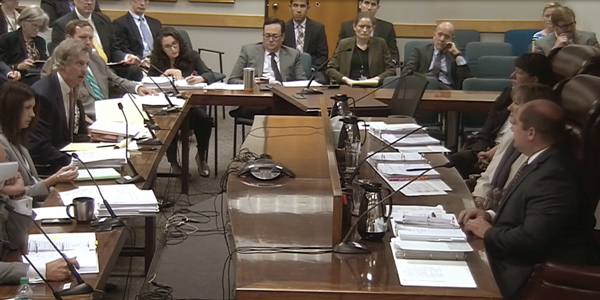By Tom Kleckner
American Electric Power on Friday announced it is canceling its proposed $4.5 billion Wind Catcher Energy Connection project, one day after receiving a negative ruling from the Public Utility Commission of Texas.
The PUC on Thursday denied AEP subsidiary Southwestern Electric Power Co.’s request to acquire a 70% interest in the project, which was scheduled to be completed in 2020 to take full advantage of the federal production tax credit.
AEP had said Wind Catcher would save customers of SWEPCO and sister company Public Service Company of Oklahoma (PSO) more than $7 billion over 25 years. PSO would have owned the remaining 30% share.
“We are disappointed that we will not be able to move forward with Wind Catcher, which was a great opportunity to provide more clean energy, lower electricity costs and a more diverse energy resource mix for our customers in Arkansas, Louisiana, Oklahoma and Texas,” AEP CEO Nick Akins said in a statement.
Wind Catcher included a 2-GW wind farm,to be built by Invenergy on 300,000 acres in the Oklahoma Panhandle, and a 360-mile, 765-kV transmission line from the facility to Tulsa, where it would have been connected to the PSO and SWEPCO grids.
FERC and Arkansas and Louisiana regulators had already approved the project. The Oklahoma Corporation Commission had yet to issue a ruling, but had also expressed concerns.
Saying the project’s costs placed an undue burden on SWEPCO’s Texas ratepayers, the PUC rejected an administrative law judge’s proposal for decision (PFD) on the utility’s request for a certificate of convenience and necessity to participate in the project (Docket No. 47461).
“I don’t believe I could approve the PFD, because I don’t believe it provides sufficient safeguards for the ratepayers,” said PUC Chair DeAnn Walker. “The costs are known. The benefits are based on a lot of assumptions that are questionable.”
“They’re asking us for $4.5 billion in taxing authority against the people of Texarkana and Longview,” Commissioner Arthur D’Andrea said during the PUC’s open discussion, referencing the major cities in SWEPCO’s East Texas footprint.
“It’s one thing when the story is, ‘We need this generation to go forward,’” D’Andrea said. “But when the question is, ‘We don’t need it, and we think it will lower the rates, and we think it’s a good deal and it’s a financial play.’ … You have a burden to show the taxpayers and businesses of Texarkana and Longview really have something to gain from that. I don’t think [SWEPCO has] met that burden.”
Settlement Unlikely
The PUC in May approved a 478-MW wind farm for Southwestern Public Service, following a settlement agreement between SPS and various parties. (See Texas PUC Issues Final Order for SPS Wind Farm.)
SWEPCO was never able to reach a settlement with its intervenors.
“The only reason it worked in the SPS case was because everyone agreed to [customer protections],” Walker said. “We don’t have that situation here, where everyone could agree to what I believe are reasonable conditions.”
Thompson & Knight attorney Rex VanMiddlesworth, who represented the Texas Industrial Energy Consumers trade group, said SWEPCO’s “unnecessary $4.5 billion investment of ratepayer money” was built on a series of improbable assumptions that included $4.75/MMBtu gas prices in 2021, a federal carbon tax by 2026 and the cancellation of most other wind projects in SPP’s interconnection queue. The Energy Information Administration predicts Henry Hub gas prices will be $3.66/MMBtu in 2021, not reaching $4.75/MMBtu until 2046.
VanMiddlesworth also said Wind Catcher was “burdened” by the $1.6 billion generation tie across Oklahoma.
“That made the project 40% more expensive to construct than other wind projects, while delivering 8% less energy,” he told RTO Insider. “The commission properly found that this was not a risk that should be imposed on Texas ratepayers.”
During AEP’s quarterly earnings conference call Wednesday, Akins seemed prepared for what might come, telling analysts that the company’s “first signal of 2021 capital budgets” assumed no Wind Catcher expenditures.
Akins said Wind Catcher was incremental to AEP’s base plan, which supports 5 to 7% growth in transmission and other investment among its regulated companies.
“If Wind Catcher were not to happen, there would still be opportunities for those kinds of resources to be applied to our resource plans in [the Wind Catcher] states,” Akins said. “Obviously, we don’t want to miss the opportunity for Wind Catcher because it’s a great way to deal with the resource plans in all of those states at one time, rather than independently with perhaps less efficient projects.”
Akins likened AEP’s situation to being in a football field’s red zone, “with time running out, 3rd down with two plays to go, needing a touchdown, with both plays already called. They’re called Texas and Oklahoma.”
The Texas play resulted in a sack, though, and time ran out.






